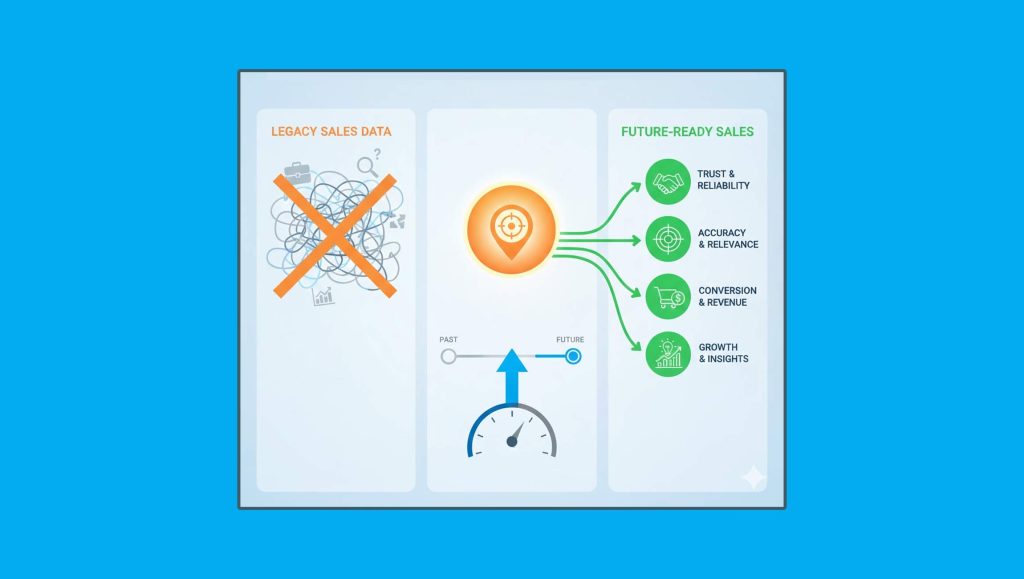As a Sales CFO, VP, or a CEO of a large company that’s publicly traded, ignoring sales forecasts is one of the sins in business that can make things disastrous. In the financial year, analysts anticipate year-end results to be well aligned with the guidance they’ve got during the enterprise’s presentations. Thus, a skipped sales forecast can trigger the plummeting of your stock price.
Top 5 Techniques To Help You Create Effective Revenue Forecasts
Thanks to this rapidly changing landscape, analysts face a hard time having a clear view of revenue prospects. When growth at the main branch dips down, companies tend to find ways to expand sales in new markets where they are not acquainted with both the needs of customers and macroeconomic conditions. All this renders it immensely tough to accurately predict revenue. And when you are introducing new products or in the emerging markets, it becomes doubly difficult, all because of a lack of historical data against which one could substantiate anticipations.
Read More: SalesTechStar Interview with Nick Mangiapane, CMO and Head of Partnerships at Commerce Signals
So, here are some techniques for you to make better revenue forecasts.
1. Make Predictions at the Right Level of Detail:
A lot of revenue forecasts are produced by implementing the expected growth rate of the market to sales of the ongoing year, substantiated by thorough planning that considers factors like average selling prices and the number of units sold, and seasonality. Nonetheless, certain revenue forecasting elements are always more crucial than others. Thus, it makes sense that some require forecasting in a substantially detailed way while others might be simply collected. In various markets where individual product’s trends of growth vary between different market segments, geographies, and channels, revenue forecast also must be done across multiple dimensions and at further granular levels to accomplish a degree of accuracy in the results. Make sure you are forecasting at the legit level of detail for the right area.
2. Include all the Key People:
Not only does involving too many people in revenue forecasts add cost to the process, but time as well. But, permitting head office people to forecast by anticipating trends would be equal to risking ignoring critical factors that are known only elsewhere in the company. To make forecasts smartly, you need to involve people who have deep, specific knowledge of business channels, key customers, and markets and give them the ability to add their information to the revenue forecast.
3. Revisit Assumptions Constantly:
Revenue forecasting done using bottom-up approaches is based on highly granular customer, pack size modeling, and often yields more precise numbers. They also provide a better understanding and insight into how slight changes in fundamental assumptions impact revenues and what actions one needs to take to even out the variances. Planners need to acknowledge that most of the input variables are estimations and that even little changes can stimulate huge impacts on forecast numbers.
4. Factor in the Productivity of Sales Channel:
Revenue forecasts need to align with the company’s sales resources in B2B markets. To build practical revenue targets, planners must understand the extent to which outside or inner salespeople can achieve and how fast they can convert prospects into customers. In these markets, quota planning and effective territory are crucial precursors to revenue forecasting. That’s because closing rates, sales force productivity, and the number of prospective customers need to be considered here.
5. Ratify B2B Revenue Forecasts Against Market Data:
While making revenue forecasts, there’s often much negotiation regarding the amount of revenue required to make a fair profit and cover expenses. Thus, discussions are often emotion-driven instead of commercial reality. So, it always makes sense to implement a reality check of revenue forecast against the market’s macro view. In this way, any disparities in market growth, market size, and market share can come up into view quickly. The top-down approach in revenue forecasting is quick and simple to do, you need to deal with fewer figures and general trends to determine forecasting numbers.
Read More: 8 Retail Innovation Trends Explored at the – Retail Technology Show 2023
Pipeline Management Software For Sales in B2B
CRM is the need of every sales team. However, those with higher ambitions need something more to get more productive and efficient. That’s where sales pipeline management software can help you. The focus of this technology is to facilitate sales process optimization in order to maintain a healthy B2B pipeline that, in shorter sales cycles, flows with greater-value deals. With Sales Pipeline Management Software, you can analyze and optimize each phase of your sales process, thereby clearing the way for more opportunities to come to you and preventing the loss of worthy deals through the cracks. Here are some of the popular and reliable Sales Pipeline Management Solutions:
- Freshsales
- Pipedrive
- Bitrix24
- Hubspot
- Outreach
These are advanced pipeline management software that helps you enhance predictability in your processes. They make clear to you as to which activities are driving the best results, so you can strategize accordingly.






















